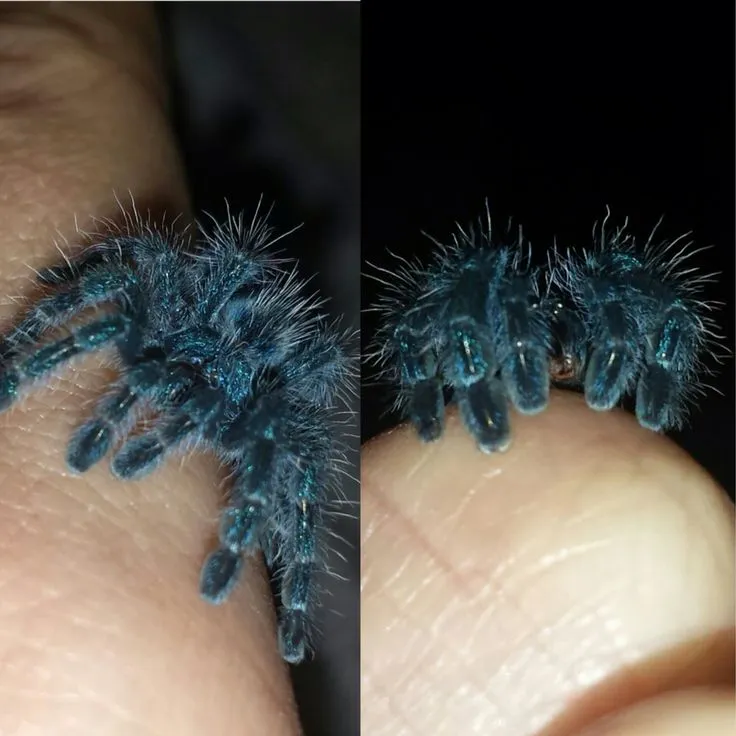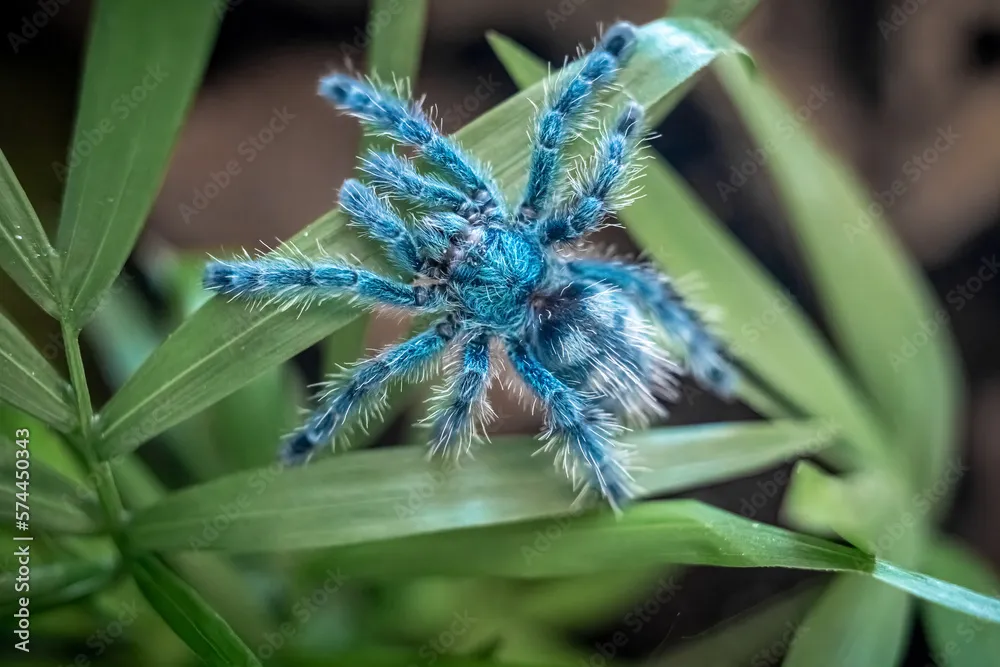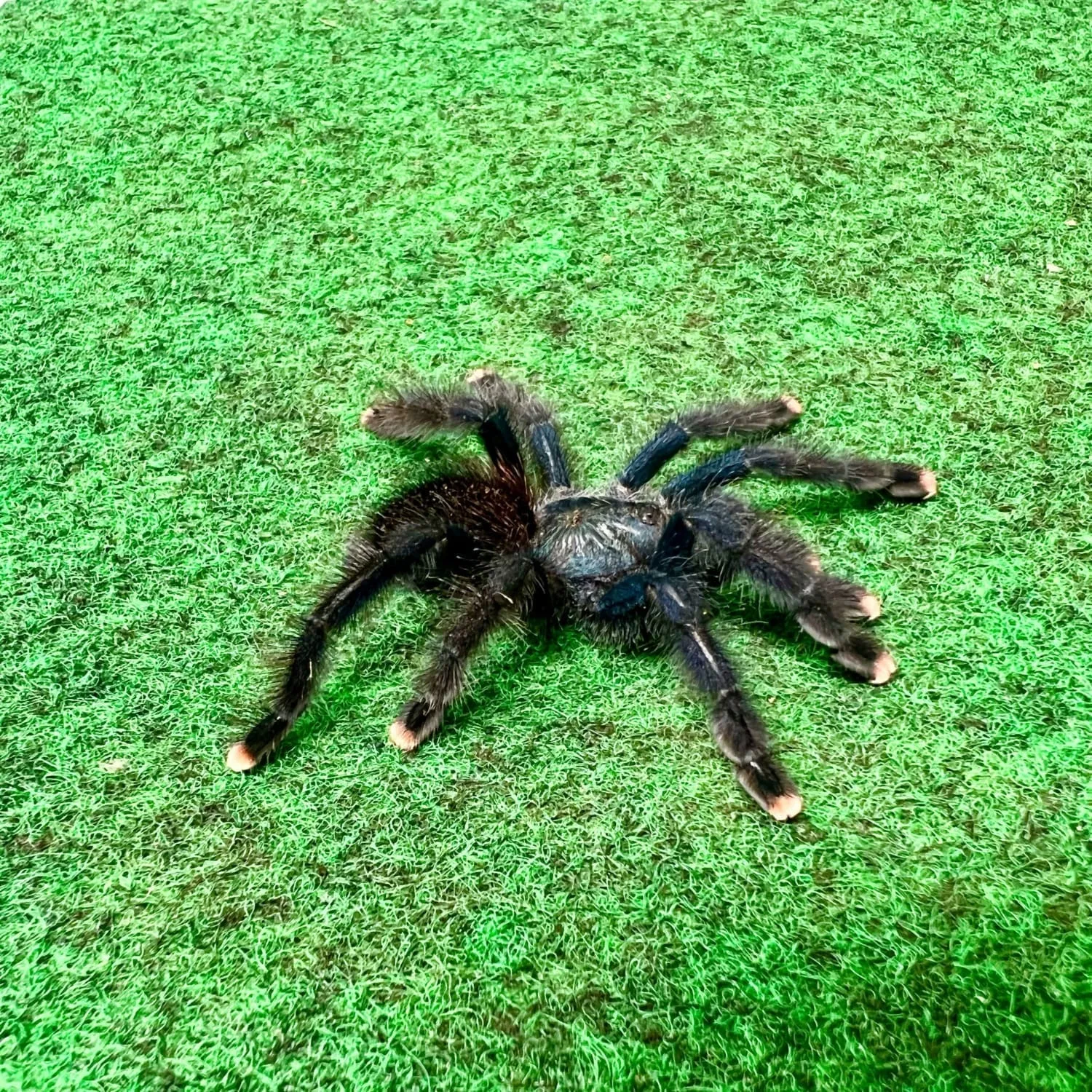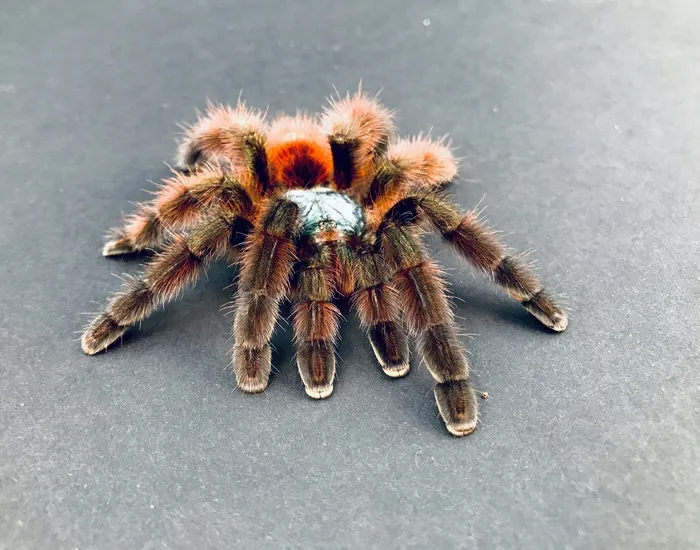Martinique Pink Toe Tarantula Top 5 Facts
The Martinique Pink Toe Tarantula, scientifically known as Avicularia versicolor, is a captivating and popular choice among tarantula enthusiasts. Its vibrant colors and relatively docile nature make it an appealing pet. Finding a Martinique Pink Toe Tarantula for sale can be exciting, but it is crucial to understand the needs of this fascinating creature. This guide will delve into five key facts to help you better understand and care for your new pet. From its appearance and habitat to its feeding habits and potential health concerns, you’ll gain valuable insights to ensure your tarantula thrives. Before you bring one home, it’s essential to be prepared to provide the right environment and care for your pink toe tarantula. This involves understanding its specific needs related to housing, feeding, and overall well-being. This information will empower you to provide the best possible care for your new pet.
Appearance and Characteristics
The Martinique Pink Toe Tarantula is renowned for its stunning appearance. The most striking feature is, of course, its pink toe pads, which provide excellent grip for climbing. Its carapace, the upper part of the cephalothorax, often displays iridescent colors ranging from green to blue, providing a beautiful contrast against its dark abdomen. The abdomen is typically covered in reddish hairs, adding to its visual appeal. As spiderlings, they start with vibrant blue hues, gradually developing their pink toes and colorful carapaces as they mature. The size of an adult Martinique Pink Toe Tarantula can range from 5 to 6 inches in leg span, with females typically being larger than males. The vibrant colors and distinctive appearance make this tarantula a favorite among pet owners. When you are looking for a Martinique Pink Toe Tarantula for sale, always check for these key characteristics to ensure you are getting a healthy specimen.
Identifying a Martinique Pink Toe Tarantula

Identifying a Martinique Pink Toe Tarantula is relatively straightforward due to its unique characteristics. Key features include the pink toe pads, which are the most prominent identifier. The iridescent carapace, with its hues of green, blue, and sometimes purple, is another distinguishing trait. The reddish hairs on the abdomen provide a further visual cue. Ensure that the tarantula displays these features, and you can be reasonably certain that it’s a true Avicularia versicolor. Avoid purchasing specimens that lack these distinctive characteristics, as they might be misidentified or unhealthy. Additionally, observe the tarantula’s behavior. Martinique Pink Toe Tarantulas are known for their arboreal habits, meaning they spend most of their time in trees or elevated positions. Confirm the presence of these traits to ensure the tarantula is of the correct species and in good health, especially if you are buying one. The information can protect you when you buy your first Martinique Pink Toe Tarantula for sale.
Natural Habitat and Origin
The Martinique Pink Toe Tarantula originates from the island of Martinique, a French overseas territory in the Caribbean. In its natural habitat, this tarantula lives in tropical rainforests, where it finds an abundance of trees and foliage to build its webs. They are arboreal tarantulas, meaning they live in trees, constructing silken nests among the leaves and branches. Understanding their natural environment is crucial for replicating it in captivity. The warm, humid climate of Martinique is essential for their well-being. The habitat is characterized by high humidity, dense vegetation, and a variety of insect prey. If you are considering a Martinique Pink Toe Tarantula for sale, you should research their natural environment to meet their needs.
Where They Come From
The Martinique Pink Toe Tarantula is native to the island of Martinique, a location which is important for understanding the species’ needs. The island’s tropical climate, with its high humidity and temperatures, provides the ideal conditions for these tarantulas to thrive. Wild populations of Avicularia versicolor can be found in the island’s lush rainforests, often nestled in trees and shrubs. Their natural habitat provides the inspiration for creating a suitable enclosure. When purchasing a Martinique Pink Toe Tarantula for sale, it’s important to know that most specimens available in the pet trade are captive-bred. This practice helps to reduce the impact on wild populations and ensures a healthier start for your new pet. It is the main reason to get them for sale.
Ideal Enclosure Setup

Creating an ideal enclosure for your Martinique Pink Toe Tarantula is vital for its health and happiness. Given their arboreal nature, a tall enclosure is essential, with the height being more important than the floor space. A minimum size of 12x12x18 inches (length x width x height) is recommended for an adult, although larger enclosures are always better. The enclosure should be well-ventilated to prevent the buildup of humidity and mold, but not so much that it dries out the enclosure. The enclosure should include a secure lid to prevent escapes. Also, the enclosure should have ample ventilation to allow for proper air circulation, which helps prevent the growth of mold and maintains healthy conditions for the tarantula. When searching for a Martinique Pink Toe Tarantula for sale, ensure you are also prepared to set up the right environment.
Substrate and Decor
Choosing the right substrate and decor is crucial for replicating the tarantula’s natural habitat. A substrate that retains moisture but allows for proper drainage is ideal. A mix of coco fiber, peat moss, and a small amount of vermiculite works well. This mixture helps maintain the necessary humidity levels while preventing the substrate from becoming waterlogged. The decor should mimic their arboreal lifestyle. Cork bark, branches, and artificial plants provide climbing opportunities and places for the tarantula to build its web. Place the cork bark and branches strategically to allow the tarantula to establish a comfortable living space. Always include a shallow water dish, ensuring that it is easily accessible. These elements are critical to its well-being. When you find a Martinique Pink Toe Tarantula for sale, make sure you are ready with a suitable habitat.
Feeding and Diet
Feeding your Martinique Pink Toe Tarantula requires a consistent and appropriate diet. In the wild, they primarily feed on insects they find in their arboreal habitat. In captivity, crickets, roaches, mealworms, and other commercially available insects make excellent food choices. The size of the prey should be appropriate for the size of the tarantula; the general rule is that the prey should be no larger than the tarantula’s body. Juvenile tarantulas should be fed more frequently, possibly every other day, while adults can be fed once or twice a week. Always remove any uneaten prey within 24 hours to prevent stress or harm to the tarantula. The key to a healthy tarantula is a varied and appropriate diet. It is a key factor when you buy a Martinique Pink Toe Tarantula for sale.
What They Eat

The diet of a Martinique Pink Toe Tarantula in captivity should consist primarily of insects. Crickets are a staple food for most tarantulas, being readily available and relatively easy to manage. Roaches, such as Dubia roaches, are also excellent choices due to their high nutritional value and slow movement. Mealworms and superworms can also be offered, but should be fed in moderation due to their high-fat content. Feeding a variety of insects helps ensure that the tarantula receives a balanced diet. Additionally, some keepers supplement the diet with occasional treats, such as small pieces of fruit. Ensure the insects are gut-loaded before feeding to provide the tarantula with maximum nutrients. Understanding their diet is key to responsible pet ownership and it’s important to remember if you see a Martinique Pink Toe Tarantula for sale.
Lifespan and Behavior
Knowing the lifespan and behavior of your Martinique Pink Toe Tarantula is important for long-term care. Females typically live much longer than males, with females living up to 10-12 years or more, while males often only live for 2-3 years after reaching maturity. They are generally docile tarantulas, making them a good choice for beginner hobbyists. However, like all tarantulas, they can bite if they feel threatened. Handling should be kept to a minimum to reduce stress. When they are threatened, they may flick urticating hairs from their abdomen as a defense mechanism. Regular observation will help you get to know your tarantula’s behavior and needs. If you get a Martinique Pink Toe Tarantula for sale, be prepared for the long run.
Typical Behavior and Temperament
The typical behavior and temperament of a Martinique Pink Toe Tarantula are key aspects to understand. They are generally considered to be docile and are not as prone to biting as some other tarantula species. They are arboreal spiders, meaning they spend most of their time in trees or elevated positions. They are known for their speed and agility, making them interesting to watch. They are also ambush predators, waiting for prey to come within reach. They usually construct a silken retreat within their enclosure, which they use for resting and molting. While generally docile, they can be defensive if provoked, which is why handling should be kept to a minimum. Understanding these aspects of behavior will help you create a suitable environment. These factors should also be taken into consideration when looking for a Martinique Pink Toe Tarantula for sale.
Health and Common Issues

While Martinique Pink Toe Tarantulas are generally hardy, they can be susceptible to certain health issues. Dehydration is a common problem, especially in enclosures that are not humid enough. To prevent this, ensure the enclosure has adequate ventilation and mist it regularly. Molting issues can also occur, particularly if the humidity is too low or the tarantula is not well-nourished. Make sure that your tarantula can successfully molt, which is crucial for its growth and health. Parasites, such as mites, can sometimes infest tarantulas, which can be visible as tiny, moving specks. Regularly inspect your tarantula for any signs of these issues, and consult with a veterinarian or experienced tarantula keeper if you notice anything unusual. Understanding these health issues can help you keep your tarantula healthy. These things are important for the well-being of your Martinique Pink Toe Tarantula for sale.
Preventative Measures
Taking preventative measures is crucial to maintaining the health of your Martinique Pink Toe Tarantula. Maintaining the correct humidity levels is paramount to prevent dehydration and ensure successful molting. Regular misting and using a suitable substrate are essential. Providing a varied diet and removing uneaten prey helps prevent health problems associated with poor nutrition. Regularly inspect the enclosure for any signs of mold or pests, and clean the enclosure as needed. Quarantine any new tarantulas before introducing them to your existing collection to prevent the spread of disease or parasites. By taking proactive steps, you can minimize the risk of health issues and ensure your tarantula lives a long and healthy life. Careful care is essential, especially when buying a Martinique Pink Toe Tarantula for sale.
